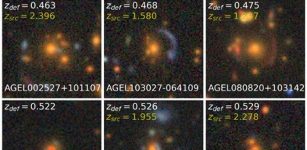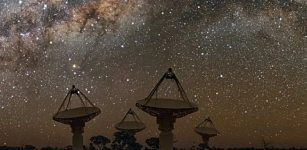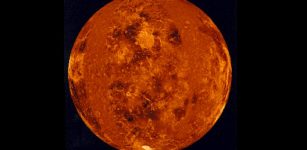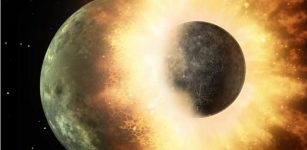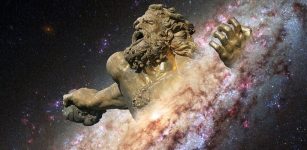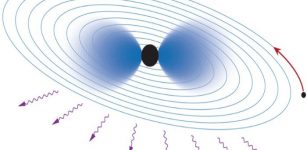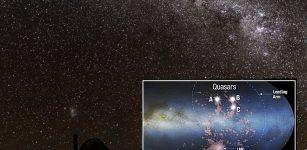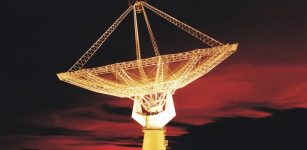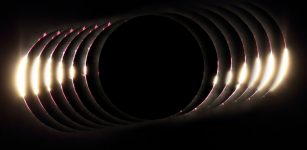Vesta: New Light On Hidden History Of A Giant Asteroid
Eddie Gonzales Jr. – MessageToEagle.com – A massive ‘hit-and-run’ collision profoundly impacted the evolutionary history of Vesta, the brightest asteroid visible from Earth.
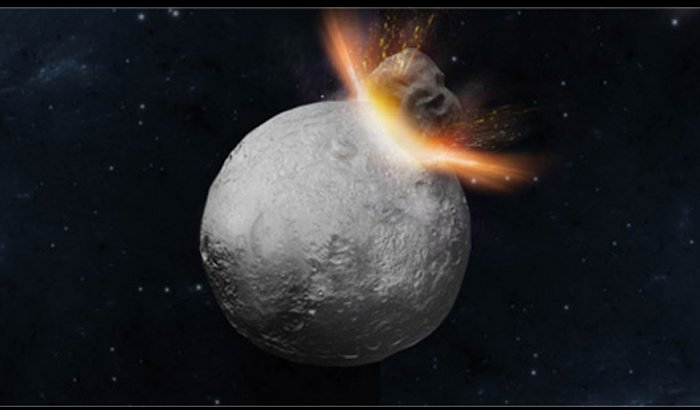 Artist’s concept of a massive ‘hit-and-run’ collision hitting Asteroid Vesta
Artist’s concept of a massive ‘hit-and-run’ collision hitting Asteroid Vesta
In their new study, researchers from Tokyo Institute of Technology, Japan’s National Institute of Polar Research and ETH Zürich, Switzerland, shed light on our understanding of protoplanet formation more than 4.5 billion years ago, in the early infancy of the Solar System.
They have determined the precise timing of a large-scale collision on Vesta that helps explain the asteroid’s lopsided shape and they pinpoint the collision to 4,525.4 million years ago.
Vesta, the second largest body in the asteroid belt, is of immense interest to scientists investigating the origin and formation of planets. Unlike most asteroids, it has kept its original, differentiated structure, meaning it has a crust, mantle and metallic core, much like Earth.
In recent years, NASA’s Dawn mission, which orbited Vesta in 2011-2012, reinforced the idea that HED (howardite-eucrite-diogenite) meteorites originate from Vesta and provided more insights into the asteroid’s composition and structure. Careful mapping of Vesta’s geology revealed an unusually thick crust at the asteroid’s south pole.
Key to uncovering this timeline was examining a rare mineral called zircon found in (stony-iron meteorites (mesosiderites) that are similar to HED meteorites in terms of texture and composition). Based on a strong premise that both types of meteorites came from the same parent body, Vesta, the team focused on dating zircon from mesosiderites with unprecedented precision.
“We developed how to find zircon in mesosiderites and eventually prepared enough grains for this study,” Makiko Haba of Tokyo Institute of Technology (Tokyo Tech) said in a press release.
Researchers developed a technique to measure the age of the samples using uranium-lead dating, the team pooled their expertise to propose a new evolutionary model for Vesta.
The team highlights two significant time-points: initial crust formation 4,558.5 ± 2.1 million years ago and metal-silicate mixing by the hit-and-run collision at 4,525.39 ± 0.85 million years ago. This collision, impacting Vesta’s northern hemisphere as shown in Figure 1, likely caused the thick crust observed by the Dawn mission, and supports the view that Vesta is the parent body of mesosiderites and HED meteorites.
Now, researchers plan to examine temperature and cooling rate during and after the large-scale collision on Vesta based on mesosiderite and HED meteorite measurements.
The dating method developed by the team could be applied to other meteorites in future to better understand when and how protoplanets formed and grew to become planets like Earth.
Written by Eddie Gonzales Jr. – MessageToEagle.com Staff

